|
|
| RHP |
South African
River Health Programme
|
State of the Rivers Report
uMngeni River and Neighbouring Rivers and Streams
|
UPPER UMSUNDUZE RESOURCE UNIT
|
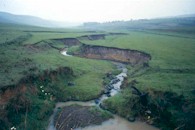
|
The uMsunduze is one of the major tributaries of the uMngeni River. It rises near Elandskop on the road to Bulwer (1 500m above sea level) and flows eastward to Henley Dam, Edendale and Pietermaritzburg. The river then flows into the hot, dry Edendale valley, where the river gradient is high and the substrate rocky. Pools are few and small in size and the water tends to be highly turbid from soil eroded fro the catchment.
|
|
The main land use types here are subsistence cultivation and rural developments with urban areas in the vicinity of Edendale and Imbali. The human population of the area is 278 200. There is also a small area of plantation forestry in the middle of this resource unit.
|
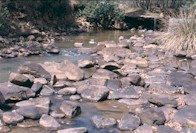
|
Water quality is Fair, but spoiled by turbidity and faecal contamination, the latter particularly bad in the lower reaches.
In the upper reaches the riparian habitat is heavily exploited mainly by stock and by people collecting wood and also due to excessive burning of vegetation during winter (annual fires are probably not a natural occurrence). In the lower reaches there are also impacts from alien vegetation.
Instream habitat in the upper portion of the area is Good which allows for healthy fish and invertebrate populations. In the lower reaches instream condition is Poor mainly due to the impact of Henley Dam and water quality issues.
Invertebrates up and downstream of Henley Dam suggest that the river is in Good condition. Species diversity is good, and many sensitive organisms are found here.
The fish scores are higher in the upper reaches due mainly to the presence of the Natal mountain catlet which used to occur in the lower reaches as well. Unfortunately bass have invaded both sections.
|
|
Overgrazing by stock has led to poor grass cover. This leads to rapid run-off of rain, poor infiltration, rapid and high flooding with soil erosion , incision of the river and turbid water.
Many informal settlements lack adequate waste services, leading to faecal and nutrient pollution. Sewer surcharges in the lower reaches compound the issue.
Industrial effluents and illegal discharges are few but occur nevertheless.
Henley Dam (now decommissioned as a supply dam) does impact on water quality. Water passing over the dam is unnaturally low in nutrients and has phytoplankton not normally found in local rivers. This encourages the occurrence of invertebrate species adapted to filtering phytoplankton, which are not natural in this area.
|
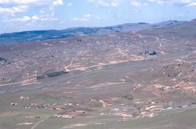
|
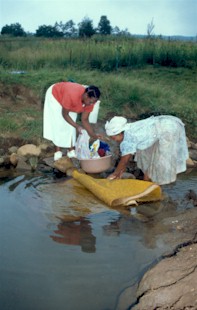
|
Dilution and transport of pollutants from the urban/peri-urban areas.
Water to support small-scale agriculture in the upper portion of catchment, with emphasis on stock watering.
Recreation and subsistence fishing.
Reeds from the riparian zone.
Cultural and in particular spiritual activities.
The river is used for clothes washing.
|
|
Measures to minimize immediate human health hazard from faecal contamination e.g. complete provision of potable water and sanitation.
Upgrading and improved management of sewerage systems
Control of stock numbers and overgrazing to reduce land degradation.
Reduce frequency of veld fires.
|
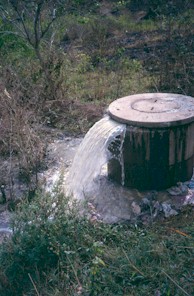
|
| TOO MUCH WATER, TOO LITTLE WATER
|
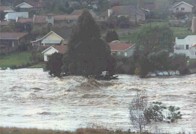
As is the case in many parts of South Africa, the uMngeni River catchment is subject to wide fluctuations in flow, ranging from crippling droughts to raging floods over the space of a few years. The last twenty years have seen these in extreme proportions, with two of the most severe droughts in recorded history (early 1980s and 1990s) interspersed by two extreme floods, cyclone Domoina in 1984 and the September 1987 floods. The latter had the greatest impact on the uMngeni River.
|
We must appreciate that while these changes in river flow are inconvenient to society, they are essential for the maintenance of the natural ecosystem. The plants and animals associated with this river evolved to cope with these cycles and any change will mean that some species will be lost or their numbers and dynamics altered. One of the worst things we do to the uMngeni River, is to regulate its flow so that it is uniform all year round, and from year to year. In this case hardy pioneer species characteristic of the uMngeni would be replaced by less adaptable species, many of which may be alien imports from rivers which have a more constant flow. Species diversity is reduced, and the whole ecosystem becomes impoverished. As a result, the risk of the breakdown of ecosystem functions and resulting failure to deliver desired goods and services to people, becomes greater.
|
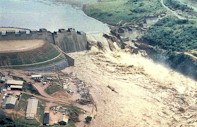
Management of the uMngeni River becomes difficult as it must balance the needs of society for a constant flow of water, with the needs of the environment which requires that some of the variability of the system be maintained.

|
|